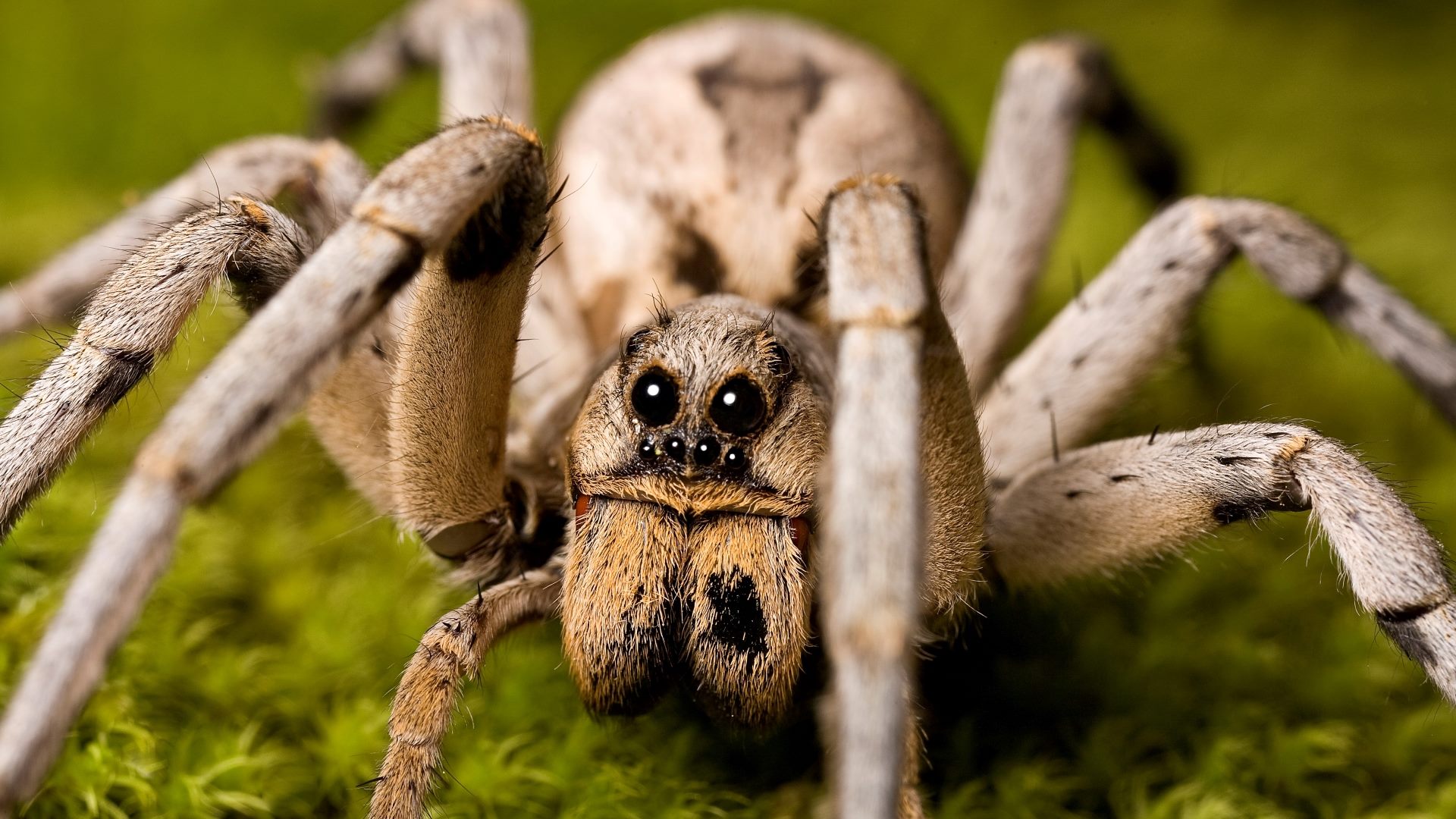
Wolf spiders are intriguing creatures that are known for their unique hunting style and impressive survival skills. These arachnids belong to the family Lycosidae and are found all over the world, except in Antarctica. With over 2000 species identified, wolf spiders come in various sizes, colors, and patterns.
What sets wolf spiders apart from other spiders is their hunting technique. Unlike most spiders that set up webs to catch their prey, wolf spiders are active hunters. They use their excellent eyesight and agility to chase down their victims, hence the name “wolf” spider. With their venomous bite, wolf spiders are capable of subduing insects and even small vertebrates.
If you’re fascinated by these eight-legged predators, here are nine fascinating facts about wolf spiders that will leave you even more amazed by their unique adaptations and lifestyles.
Key Takeaways:
- Wolf spiders are agile hunters with excellent vision, unique maternal care, and a venomous bite. They play a crucial role in controlling insect populations, maintaining the balance of ecosystems they inhabit.
- Wolf spiders are fascinating creatures found in various habitats worldwide. They are solitary, adaptable, and have a relatively long lifespan. Their hunting technique resembles that of a wolf, making them exceptional predators.
What are Wolf Spiders?
Wolf spiders are a fascinating type of arachnid that belong to the Lycosidae family. Known for their excellent hunting skills, these spiders are named after their hunting strategy, which resembles that of a wolf.
Size and Appearance
Wolf spiders come in various sizes, ranging from small to quite large. They are characterized by their robust bodies, powerful legs, and prominent eyes, which provide excellent vision during hunting.
Unique Hunting Technique
Unlike most spiders that build webs to capture prey, wolf spiders rely on their incredible agility and speed to chase down their victims. They are known to pounce on their prey and inject venom to immobilize them.
Amazing Maternal Care
Wolf spiders are exceptional parents. The females carry their egg sacs attached to their spinnerets, protecting them until the spiderlings hatch. They then carry the spiderlings on their backs until they are ready to fend for themselves.
Wide Distribution
Wolf spiders can be found in various habitats around the world, including forests, grasslands, deserts, and even your backyard. They are adaptable creatures and have successfully colonized many different environments.
Solitary Creatures
Wolf spiders are mostly solitary creatures, preferring to hunt and live independently. They have excellent camouflage, allowing them to blend seamlessly with their surroundings.
A Venomous Bite
While most wolf spider bites are relatively harmless to humans, they do possess venom that they use to subdue their prey. However, it is important to note that some species‘ bites can cause localized pain and discomfort.
Long Lifespan
Compared to other spider species, wolf spiders have a relatively long lifespan, with some individuals living up to several years. Their lifespan can vary depending on factors such as species, environment, and availability of food.
Ecological Importance
Wolf spiders play a vital role in controlling insect populations, as they feed on a wide range of pests. By keeping these populations in check, they help maintain the balance of ecosystems they inhabit.
Conclusion
Wolf spiders are truly fascinating creatures. From their unique hunting techniques to their impressive maternal instincts, there is so much to learn and appreciate about these spiders. Despite their intimidating appearance, they play a crucial role in maintaining the balance of ecosystems by controlling insect populations. Understanding their behavior and characteristics can help dispel common misconceptions and foster a greater appreciation for these remarkable arachnids.
Next time you spot a wolf spider, take a moment to observe its intricate patterns and its agile movements. Remember that they are essential contributors to the natural world and deserve respect and admiration.
FAQs
1. Are wolf spiders dangerous?
While wolf spiders possess venom, they are not considered dangerous to humans. Their bites may cause discomfort or minor pain, but severe reactions are rare. It is important to exercise caution and avoid direct contact with these spiders, especially if you have allergies or sensitivities.
2. Can wolf spiders jump or fly?
No, wolf spiders cannot fly. They lack wings. However, they are highly skilled hunters and can leap small distances to capture prey. Their incredible agility enables them to pounce on unsuspecting insects with exceptional precision.
3. How do wolf spiders care for their young?
Female wolf spiders are known for their exemplary maternal instincts. Once eggs are laid, they are carried on the mother’s abdomen until they hatch. The spiderlings then cling to the mother’s back for protection and nourishment until they are old enough to venture out on their own.
4. What do wolf spiders eat?
Wolf spiders are carnivorous and primarily feed on insects. They are skilled hunters, often relying on their keen eyesight and agility to catch their prey. Some common food sources include beetles, ants, grasshoppers, and other small arthropods.
5. How can I identify a wolf spider?
Wolf spiders can be recognized by their robust bodies, stout legs, and large eyes that reflect light. They typically have a brown or grayish coloration, along with distinct patterns on their abdomens. Additionally, their arrangement of eyes, with two large eyes in the front row, distinguishes them from other spider species.
Wolf spiders are truly remarkable creatures, but there's still so much more to learn about them. If you're curious about the rabid wolf spider's incredible abilities, the astonishing dedication of wolf spider mothers, or the intriguing characteristics of the tiger wolf spider, keep exploring. Each species has its own unique story to tell, and you won't want to miss a single detail. So, what are you waiting for? Click through and satisfy your curiosity about these amazing arachnids!
Was this page helpful?
Our commitment to delivering trustworthy and engaging content is at the heart of what we do. Each fact on our site is contributed by real users like you, bringing a wealth of diverse insights and information. To ensure the highest standards of accuracy and reliability, our dedicated editors meticulously review each submission. This process guarantees that the facts we share are not only fascinating but also credible. Trust in our commitment to quality and authenticity as you explore and learn with us.


